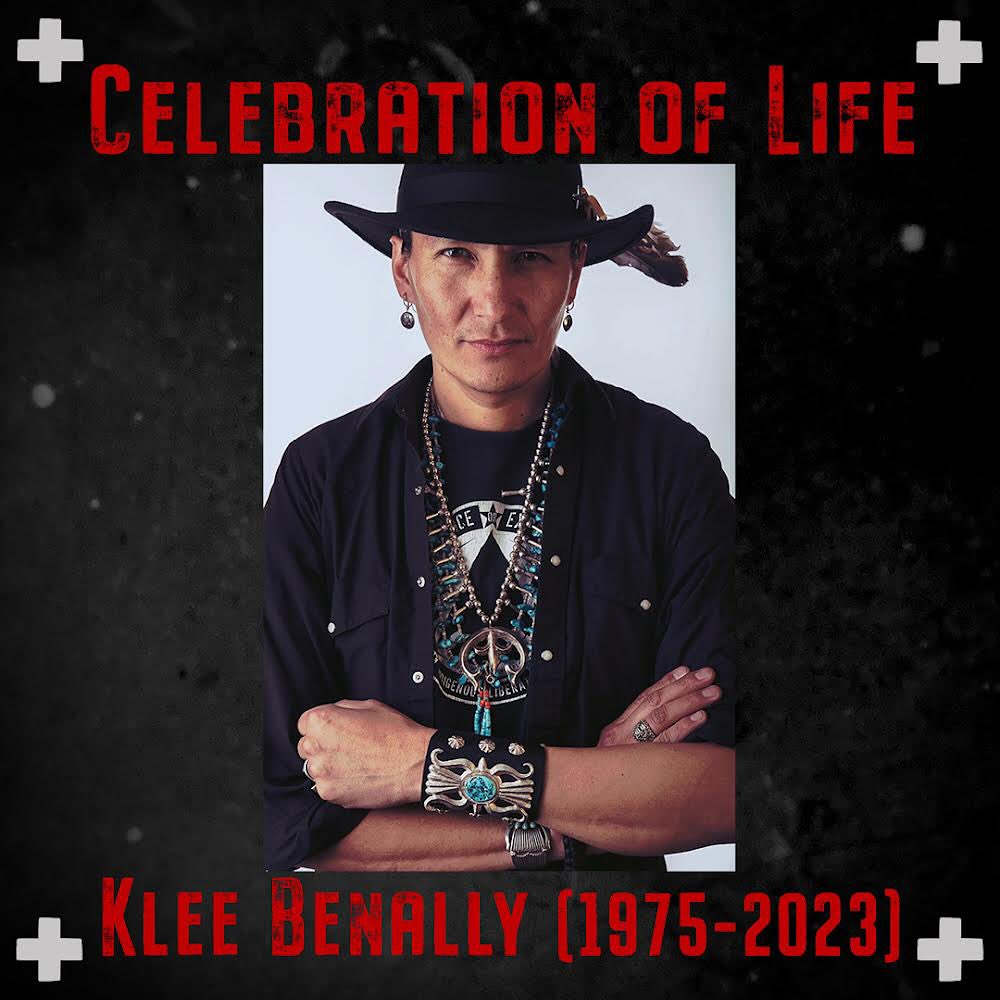
- Details
- By Native News Online Staff
A celebration of life for beloved Diné activist Klee Benally is being held at 2 pm on January 6 at the Orpheum Theatre in Kinłání, Occupied Territories (Flagstaff, Ariz.).
Benally walked on on Saturday, December 31, at a Phoenix hospital. His cause of death has not been disclosed. He was 48 years old.
Benally was a well-known and passionate advocate for many issues affecting Native peoples.
Organizers of Benally’s celebration of life encourage donations of warm clothing to carry on his work for unsheltered relatives.
He spoke out against police violence and, in 2014, joined other activists outside of metro Phoenix’s NFL stadium to denounce the offensive team name previously used by the franchise from Washington, D.C.
Benally advocated for the cleanup of abandoned mines, where uranium ore was extracted from the Navajo Nation over decades to support U.S. nuclear activities during the Cold War. He protested an ordinance that banned camping on public property in Flagstaff aimed at the area’s homeless population.
“There is no compassionate way to enforce the anti-camping ordinance,” Benally said in 2018 when officials declined to alter the 2005 ordinance. “Life is already hard enough for our unsheltered relatives on the streets.”
According to a report from the Navajo Times, Benally was from Dziłyíjiin, Arizona. He was from the Tódích’íi’nii and Wandering People clans.
Benally grew up being taught traditional Navajo culture by his father, Jones Benally, a well-known hataałii (medicine man).
On November 18, Benally published his book, “No Spiritual Surrender: Indigenous Anarchy in Defense of the Sacred,” described as a searing anti-colonial analysis rooted in his experience fighting for sacred places and why he does it to protect nahasdzáán (Mother Earth).
According to a report from the Navajo Times, Benally was from Dziłyíjiin, Arizona. He was from the Tódích’íi’nii and Wandering People clans.
Benally's passing has been widely reported across local and mainstream media, including the Arizona Republic, the Associated Press and ABC News.
More Stories Like This
Native News Weekly (August 25, 2024): D.C. BriefsUS Presidents in Their Own Words Concerning American Indians
Star-Studded Livestream to Boost Native News Online’s Year-End Campaign
Monday Morning (December 8, 2025): Articles You May Have Missed This Past Weekend
Native News Weekly (December 7, 2025): D.C. Briefs
Help us defend tribal sovereignty.
At Native News Online, our mission is rooted in telling the stories that strengthen sovereignty and uplift Indigenous voices — not just at year’s end, but every single day.
Because of your generosity last year, we were able to keep our reporters on the ground in tribal communities, at national gatherings and in the halls of Congress — covering the issues that matter most to Indian Country: sovereignty, culture, education, health and economic opportunity.
That support sustained us through a tough year in 2025. Now, as we look to the year ahead, we need your help right now to ensure warrior journalism remains strong — reporting that defends tribal sovereignty, amplifies Native truth, and holds power accountable.
 The stakes couldn't be higher. Your support keeps Native voices heard, Native stories told and Native sovereignty defended.
The stakes couldn't be higher. Your support keeps Native voices heard, Native stories told and Native sovereignty defended.
Stand with Warrior Journalism today.
Levi Rickert (Potawatomi), Editor & Publisher


